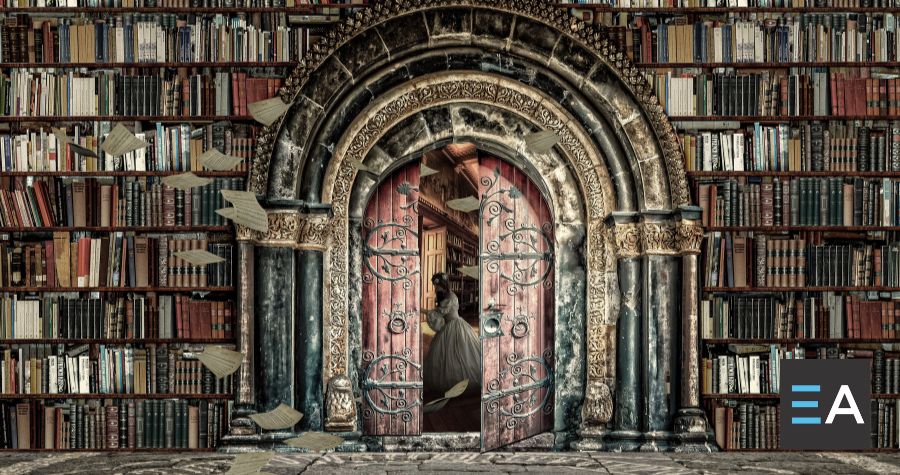
Harnessing the Power of Book Clubs for Marketing
July 30, 2024
Using Book Preorders to Skyrocket Your Book Launch
August 12, 2024High Fantasy vs. Low Fantasy: Which Should Your Story Be?

Fantasy fiction can accomplish many things, from transporting readers to a magical world filled with heroic characters to captivating them with intricate plot points. Before outlining the novel or starting the story, a fantasy writer must decide between two very different subgenres of speculative fiction: high fantasy and low fantasy. The first step in choosing your genre is understanding the difference between these two types of stories.
The difference between high fantasy and low fantasy
The world of fantasy literature is vast and encompasses a multitude of subgenres. Two of the most prominent are high fantasy and low fantasy. Here’s the difference between these two unique genres:
- High fantasy is characterized by grand, epic storytelling set in intricate, fully realized secondary worlds with complex magic systems and in-depth lore. Think J.R.R. Tolkien’s Middle-earth or George R.R. Martin’s Westeros.
- Low fantasy stories usually take place in a world or setting that’s familiar to the reader, and often feature a protagonist from that world who encounters mythical or magical elements that challenge their understanding of reality. Examples include Harry Potter’s universe or the adventures of Percy Jackson.
Understanding the differences between high and low fantasy is key to fully appreciating the expansive and imaginative realm of fantasy literature—and to determining which genre fits your storytelling style.
Exploring the world of high fantasy: magic, adventure, and escapism
Enter the world of high fantasy and you’ll find yourself immersed in a universe where magic reigns supreme and every corner holds the promise of adventure and escapism. Journey through enchanted forests, witness epic battles between good and evil, and adventure alongside the heroic protagonist.
High fantasy takes you on a wild ride through an imaginative world, where dragons soar across the skies, wizards cast spells on their enemies, and elves and dwarves create mischief. In this genre, nothing is ordinary, and every page brings a new level of excitement. Because of all the intricate details involved in high fantasy, authors of this genre often enlist the help of a developmental editor to make sure the story flows well and avoids any plot inconsistencies.
Understanding low fantasy: darker stories closer to reality
Low fantasy delves into the darker side of reality. Unlike the magical worlds created in high fantasy, this subgenre is much closer to home. The characters are flawed and relatable, and their obstacles often mirror real-world struggles. This is what makes low fantasy so engaging, from the book trailer all the way to the last page. It’s not just about letting readers escape their daily realities—it’s about looking at, accepting, and embracing our own flaws and fears, and facing the darkness to find the light within.
If you want to write a story that’s both intense and thought-provoking, low fantasy might be the genre for you.
How to choose which fantasy genre to write
Choosing a genre for your next book is an exciting time in any writer’s life. To help yourself determine whether to write a high or low fantasy story, start by considering the main elements. Are your plot, characters, and themes better suited for a high fantasy tale based in a magical, mythical setting, or do they lend themselves better to more of a real-world backdrop?
You can also engage in a creative exercise to help determine which type of fantasy to write: think about your favorite fantasy books and why you loved them. Did you gravitate toward stories with epic battles like The Lord of the Rings? Were you captivated by the magic of Alice’s Adventures in Wonderland? Or did you prefer darker tales with supernatural creatures like Dracula?
By examining the elements that drew you to these stories even from a young age, you can gain insight into the type of fantasy that resonates with you and fits your writing style.
Tips for writing in each fantasy genre
Regardless of whether you choose to write a high or low fantasy book, there are some tips you can take advantage of to help you craft an engaging story that your readers will love. For example, if high fantasy fits your writing style, you’ll need to create a well-developed, intricate world with detailed magical themes. You might use the mind mapping method to keep track of your ideas and plotlines as your story and characters develop.
If you’ve selected low fantasy as your genre, you might need to spend some time on research before you actually start writing, as low fantasy often requires a deep understanding of the historical or cultural context from which you’ll draw inspiration. By grounding your story in reality, you can create a more believable world that still allows for elements of magic or the supernatural.
Both high and low fantasy stories must strike a balance between creative imagination and logical consistency. When done well, your writing can transport your readers to entirely new worlds that are both captivating and believable.
Our expert editors can help you create a fantasy book your readers will love
Great fantasy stories keep their readers enthralled from beginning to end with complex worlds, characters, and themes—and sometimes all these details are difficult to keep track of. From a developmental edit that ensures consistent flow all the way to the final proofread, our editing services can help you craft a book that keeps your readers enthusiastically turning the pages.
We’re here to help maximize your budget so you can tell your best story yet. Customize your publishing package and begin your journey to becoming a published author today!


